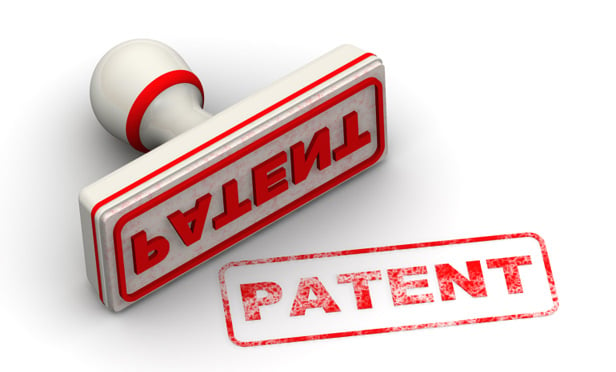Features

Three Key Considerations for Trade Secret Owners Seeking Protection Under the Texas Uniform Trade Secrets Act
In today’s competitive marketplace, a company’s most valuable assets are often not found on its balance sheet. The proprietary formulas, customer databases, pricing models, and operational processes that give businesses their competitive edge represent intellectual capital that can literally be worth millions — or lost in an instant. As innovation drives business success, protecting these trade secrets has become critical to maintaining market position and profitability.
Features

The Curious Persistence of the Six-Factor Trade Secret Test, Part 2
This two-part article discusses the requirements for information to be considered a trade secret under U.S. law, focusing on courts’ continued use of the six-factor test outlined in the Restatement of Torts. Part One covered the evolving tests for establishing a trade secret, while Part Two examines the compatibility of those tests and potential considerations for litigators and legislators.
Features

The Curious Persistence of the Six-Factor Trade Secret Test
This two-part article discusses the proof required for information to be considered a trade secret under U.S. statutory law, and includes detailed insight into the six-factor test outlined in the Restatement of Torts. Part One includes the evolving tests for determining a trade secret.
Features

Examining the Extraterritoriality of the DTSA
Can a company's trade secrets misused abroad give recourse on the extraterritoriality of the Defend Trade Secrets Act? Yes, said the 7th Circuit in an important new case in which a claim under the DTSA was asserted.
Features

The Seventh Circuit's Decision In 'Motorola v. Hytera': Examining the Extraterritoriality of the DTSA
Can a company's trade secrets misused abroad give recourse on the extraterritoriality of the Defend Trade Secrets Act? Yes, said the 7th Circuit in an important new case which provides a roadmap for future cases involving international trade secret theft, finding liability for foreign misappropriation triggered by a domestic act.
Features

LJN Quarterly Update: 2024 Q2
The LJN Quarterly Update highlights some of the articles from the nine LJN Newsletters titles over the quarter. Articles include in-depth analysis and insights from lawyers and other practice area experts.
Features

Patent Your Trade Secrets In Wake of Noncompete Ban
While it may be growing more difficult to protect business information with the FTC's noncompete ban, patents can provide strong protection over technical innovations, regardless of whether the inventor stays with the company or leaves.
Features

Trade Secret Protection Plans Provide Certainty to Employers
The protection of trade secrets has long been understood to be a legitimate business interest, and, traditionally, companies have used non-competition clauses to protect their trade secrets. Now, with non-competition agreements in doubt and facing greater scrutiny, companies will need to rely on other protection mechanisms.
Features

Protection for Confidential Business Information In a Changing Non-Compete Landscape
While reasonable post-employment restrictions remain enforceable (at least in the context of confidential information), the increased hostility to them has revived interest in the use of other legal protections for proprietary business materials.
Features

Like Mushrooms After A Rainstorm: Trade Secret Cases, and Lawyers, Are Growing Exponentially
In modern times, trade secrets have long been considered mainly the province of employment lawyers dealing with more mundane issues such as customer relationships. Today, it seems trade secrets lawyers are multiplying like mushrooms after a rainstorm — coming not only from the employment bar, but also from IP, particularly the patent bar.
Need Help?
- Prefer an IP authenticated environment? Request a transition or call 800-756-8993.
- Need other assistance? email Customer Service or call 1-877-256-2472.
MOST POPULAR STORIES
- The DOJ's New Parameters for Evaluating Corporate Compliance ProgramsThe parameters set forth in the DOJ's memorandum have implications not only for the government's evaluation of compliance programs in the context of criminal charging decisions, but also for how defense counsel structure their conference-room advocacy seeking declinations or lesser sanctions in both criminal and civil investigations.Read More ›
- Law Firm Real Estate Strategy: Attorney Offices Are Out, Conference Rooms Are InLaw firms are navigating a paradigm shift in how they approach office space. With the rise of flexible workplaces, firms are finding that when their attorneys do come into the office, the main goal is to connect and collaborate with peers — and this shift has transformed how law firms address their real estate needs.Read More ›
- Use of Deferred Prosecution Agreements In White Collar InvestigationsThis article discusses the practical and policy reasons for the use of DPAs and NPAs in white-collar criminal investigations, and considers the NDAA's new reporting provision and its relationship with other efforts to enhance transparency in DOJ decision-making.Read More ›
- The DOJ's Corporate Enforcement Policy: One Year LaterThe DOJ's Criminal Division issued three declinations since the issuance of the revised CEP a year ago. Review of these cases gives insight into DOJ's implementation of the new policy in practice.Read More ›
- The DOJ Goes Phishing: The Rise of False Claims Act Cybersecurity LitigationWhile the DOJ Civil Cyber-Fraud Initiative is still in its early stages and cybersecurity regulations are evolving, whistleblower plaintiffs have already begun leveraging the FCA to pursue alleged noncompliance with government cybersecurity requirements.Read More ›
